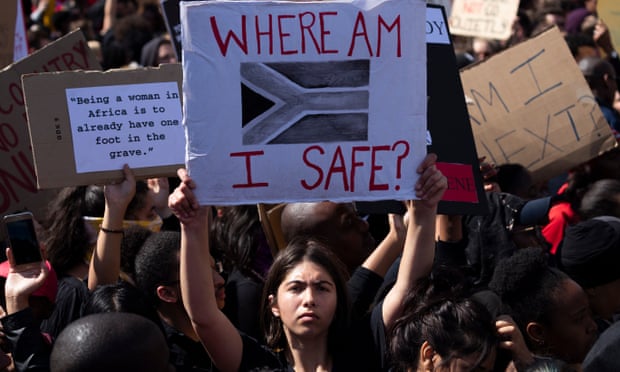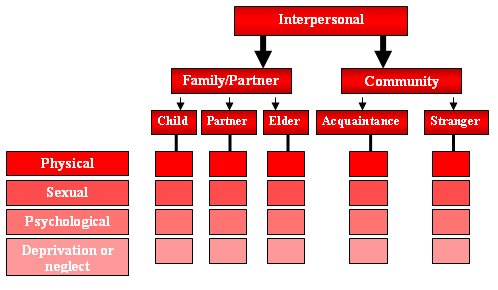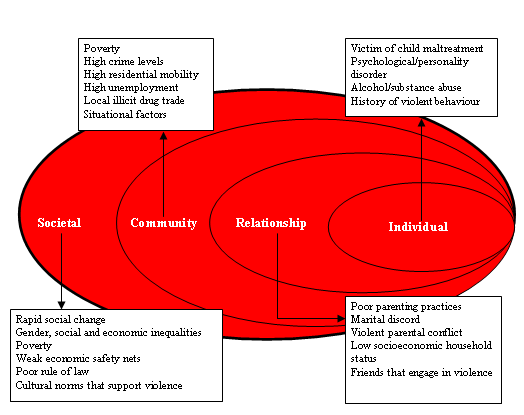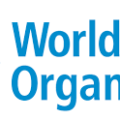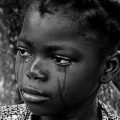The world health organization defines violence as “the intentional use of physical force or power, threatened or actual, against oneself, another person, or against a group or community, that either results in or has a high likelihood of resulting in injury, death, psychological harm, maldevelopment, or deprivation.”
The World report on violence and health (WRVH), presents a typology of violence that, while not uniformly accepted, can be a useful way to understand the contexts in which violence occurs and the interactions between types of violence. This typology distinguishes four modes in which violence may be inflicted: physical; sexual; and psychological attack; and deprivation. It further divides the general definition of violence into three sub-types according to the victim-perpetrator relationship.
- Self-directed violence refers to violence in which the perpetrator and the victim are the same individual and is subdivided into self-abuse and suicide.
- Interpersonal violence refers to violence between individuals, and is subdivided into family and intimate partner violence and community violence. The former category includes child maltreatment; intimate partner violence; and elder abuse, while the latter is broken down into acquaintance and stranger violence and includes youth violence; assault by strangers; violence related to property crimes; and violence in workplaces and other institutions.
- Collective violence refers to violence committed by larger groups of individuals and can be subdivided into social, political and economic violence.
Typology of interpersonal violence
The Ecological Framework And Violence
The ecological framework is based on evidence that no single factor can explain why some people or groups are at higher risk of interpersonal violence, while others are more protected from it. This framework views interpersonal violence as the outcome of interaction among many factors at four levels—the individual, the relationship, the community, and the societal.
- At the individual level, personal history and biological factors influence how individuals behave and increase their likelihood of becoming a victim or a perpetrator of violence. Among these factors are being a victim of child maltreatment, psychological or personality disorders, alcohol and/or substance abuse and a history of behaving aggressively or having experienced abuse.
- Personal relationships such as family, friends, intimate partners and peers may influence the risks of becoming a victim or perpetrator of violence. For example, having violent friends may influence whether a young person engages in or becomes a victim of violence.
- Community contexts in which social relationships occur, such as schools, neighborhoods and workplaces, also influence violence. Risk factors here may include the level of unemployment, population density, mobility and the existence of a local drug or gun trade.
- Societal factors influence whether violence is encouraged or inhibited. These include economic and social policies that maintain socioeconomic inequalities between people, the availability of weapons, and social and cultural norms such as those around male dominance over women, parental dominance over children and cultural norms that endorse violence as an acceptable method to resolve conflicts.
The ecological framework treats the interaction between factors at the different levels with equal importance to the influence of factors within a single level. For example, longitudinal studies suggest that complications associated with pregnancy and delivery, perhaps because they lead to neurological damage and psychological or personality disorder, seem to predict violence in youth and young adulthood mainly when they occur in combination with other problems within the family, such as poor parenting practices. The ecological framework helps explain the result—violence later in life—as the interaction of an individual risk factor, the consequences of complications during birth, and a relationship risk factor, the experience of poor parenting. This framework is also useful to identify and cluster intervention strategies based on the ecological level in which they act. For example, home visitation interventions act in the relationship level to strengthen the bond between parent and child by supporting positive parenting practices.


